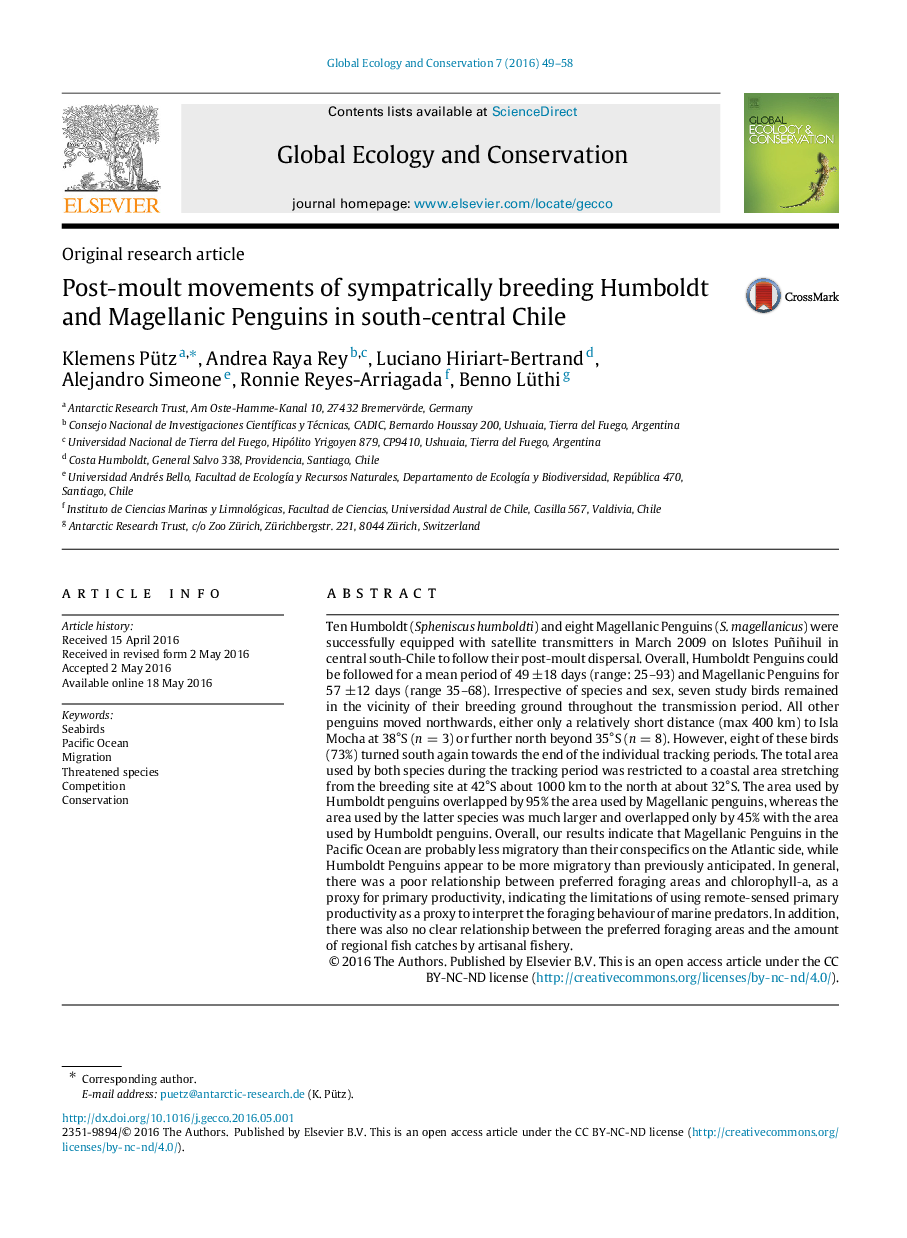| کد مقاله | کد نشریه | سال انتشار | مقاله انگلیسی | نسخه تمام متن |
|---|---|---|---|---|
| 4379455 | 1617660 | 2016 | 10 صفحه PDF | دانلود رایگان |
Ten Humboldt (Spheniscus humboldti) and eight Magellanic Penguins (S. magellanicus ) were successfully equipped with satellite transmitters in March 2009 on Islotes Puñihuil in central south-Chile to follow their post-moult dispersal. Overall, Humboldt Penguins could be followed for a mean period of 49 ±18 days (range: 25–93) and Magellanic Penguins for 57 ±12 days (range 35–68). Irrespective of species and sex, seven study birds remained in the vicinity of their breeding ground throughout the transmission period. All other penguins moved northwards, either only a relatively short distance (max 400 km) to Isla Mocha at 38°S (n=3n=3) or further north beyond 35°S (n=8n=8). However, eight of these birds (73%) turned south again towards the end of the individual tracking periods. The total area used by both species during the tracking period was restricted to a coastal area stretching from the breeding site at 42°S about 1000 km to the north at about 32°S. The area used by Humboldt penguins overlapped by 95% the area used by Magellanic penguins, whereas the area used by the latter species was much larger and overlapped only by 45% with the area used by Humboldt penguins. Overall, our results indicate that Magellanic Penguins in the Pacific Ocean are probably less migratory than their conspecifics on the Atlantic side, while Humboldt Penguins appear to be more migratory than previously anticipated. In general, there was a poor relationship between preferred foraging areas and chlorophyll-a, as a proxy for primary productivity, indicating the limitations of using remote-sensed primary productivity as a proxy to interpret the foraging behaviour of marine predators. In addition, there was also no clear relationship between the preferred foraging areas and the amount of regional fish catches by artisanal fishery.
Journal: Global Ecology and Conservation - Volume 7, July 2016, Pages 49–58
